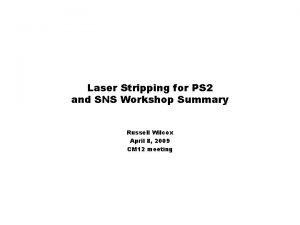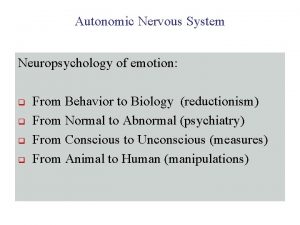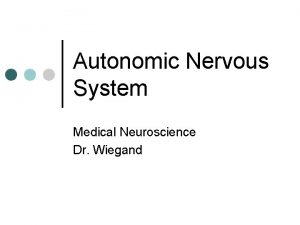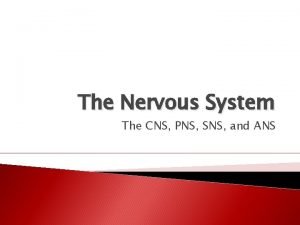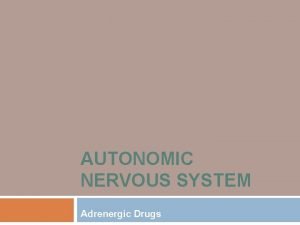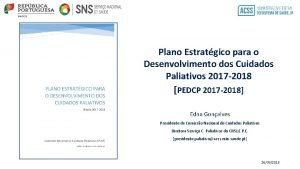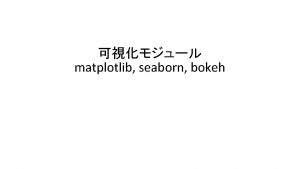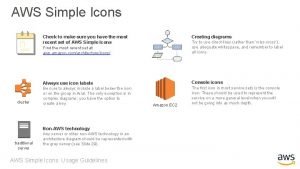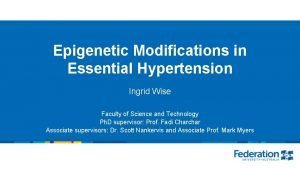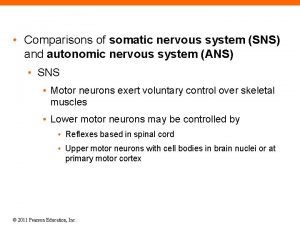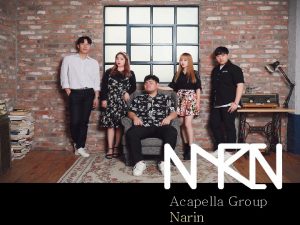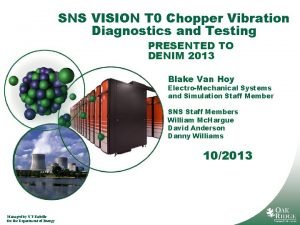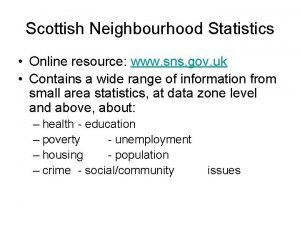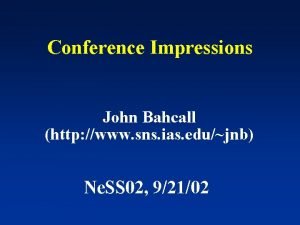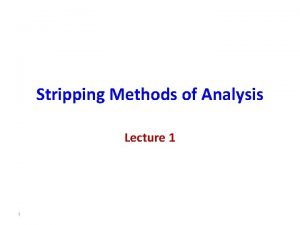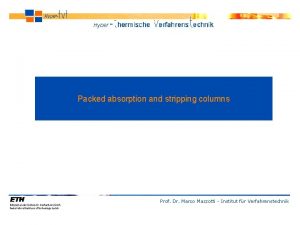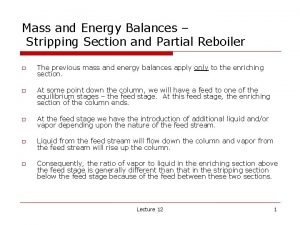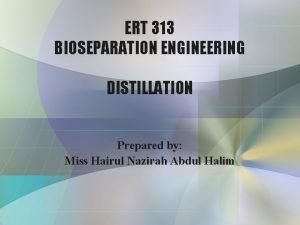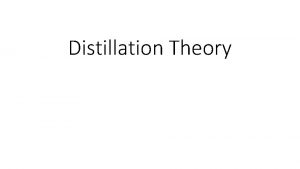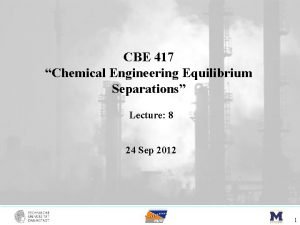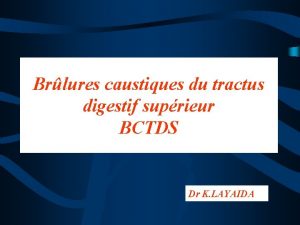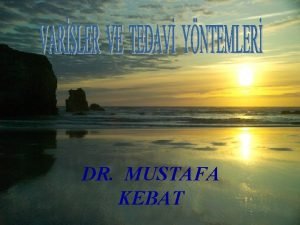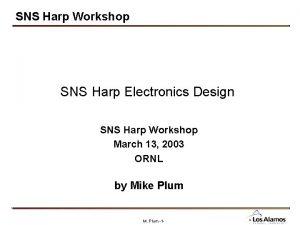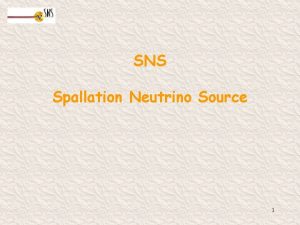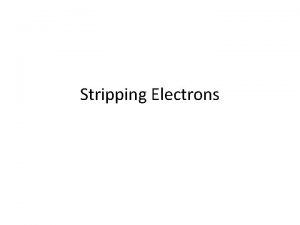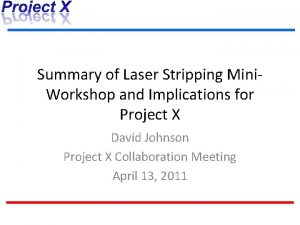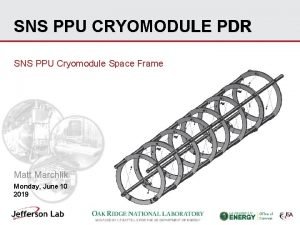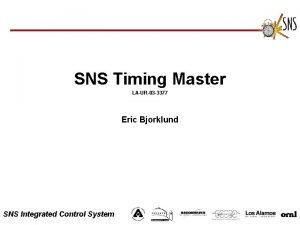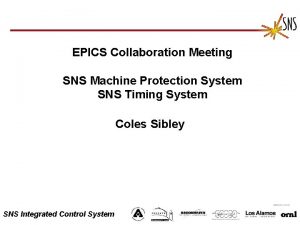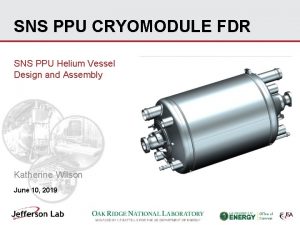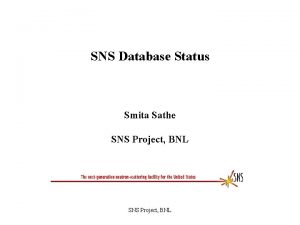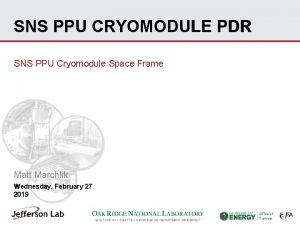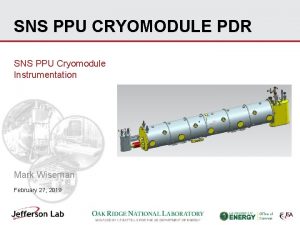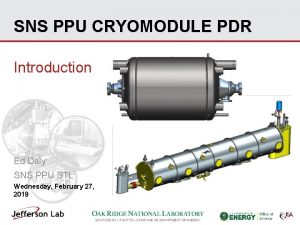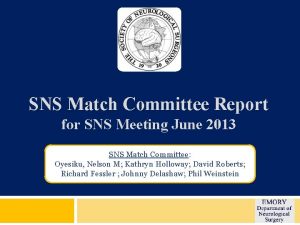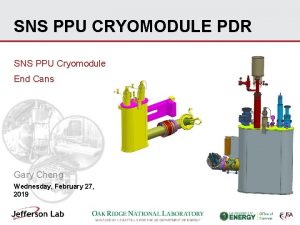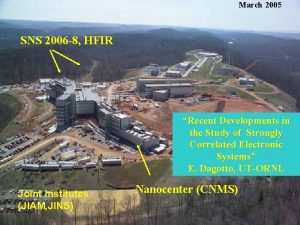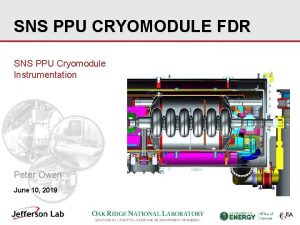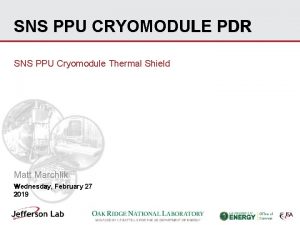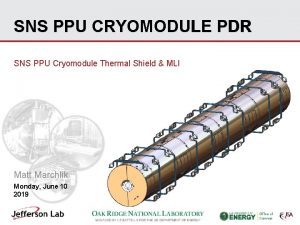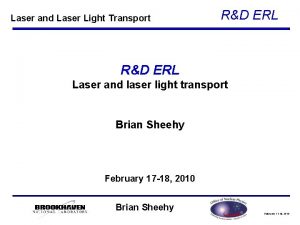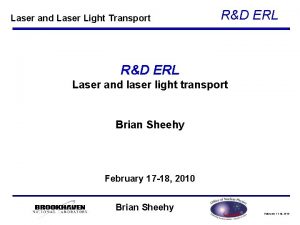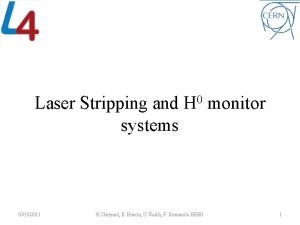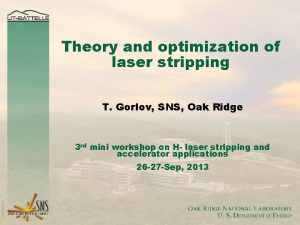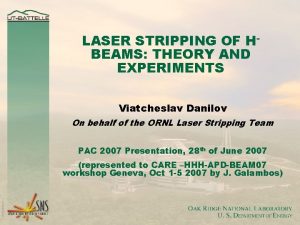Laser Stripping for PS 2 and SNS Workshop


























- Slides: 26

Laser Stripping for PS 2 and SNS Workshop Summary Russell Wilcox April 8, 2009 CM 12 meeting

A useful workshop • • Focused on a specific problem Brought together those with problem and those with solution Everyone learned a lot But, plenty of confusion about what laser power is actually required – How power is specified for micro versus macro pulse versus average – How much power is “ideal” given various reduction schemes – Different requirements of different facilities with various energies Institution Attendees ORNL 19 CERN 3 FNAL 3 LBNL 2 Continuum 2 KEK 1 RAL 1 Muons, Inc 1 Indiana U. 1


















Pulse format and (SNS) parameters 1 MW 30 ps 30 u. J Optical parameters in the cavity 532 nm 2. 5 ns 12 k. W 1 ms 12 J 720 W avg. 16. 7 ms • Assume a cavity buildup factor of 120 with 532 nm light (stronger second magnet) – Typical IR cavities achieve few hundred to few thousand – This means ~1 us buildup time, no sense in mini-chopping – Average power from laser (during macropulse) is 200 W at 1064 nm – Frequency conversion to 532 nm is 50% efficient, so 100 W to cavity

Pulse format and (PS 2) parameters 1. 5 MW 15 ps 22. 5 u. J Optical parameters in the cavity 1064 nm, 47. 5 deg. between beams 2. 86 ns 7. 8 k. W 1 ms 7. 8 J 15. 6 W avg. 500 ms • • Assume a cavity buildup factor of 100 with 1064 nm light – Average power from laser (during macropulse) is 78 W at 1064 nm Easier than SNS – 1064 nm is the desired wavelength, no frequency conversion – Average cavity loading power is much lower

Proposed SNS laser system 60 Hz trigger 400 MHz machine timing synchronizer modelocked Nd: YAG laser 10 W 60 Hz trigger optical switch 1 ms pulse generator Average power during 1 ms pulse is 100 W Assumes 100 x buildup cavity All components are commercially available Lasers are diode-pumped for stability, reliability pulsed power supply Nd: YAG preamp doublepassed Nd: YAG amp 30 W 200 W frequency converter 1 ms burst 400 MHz, 30 ps 100 W avg. to transport optics and buildup cavity

Laser components are commercially available Modelocked oscillator Pulse-pumped amplifiers • • • Diode pumped lasers are more reliable, stable and low maintenance than flashlamp pumped lasers Pulse pumping by flashlamps provides pulse widths about equal to energy storage lifetime (~230 microseconds) 1 ms pulse requires CW or quasi-CW (long pulse) pumping – the latter reduces thermal load and optical distortion

Example transport and cavity system transport optics from laser active align ~40 cm H- beam waist, 40 um evacuated tube active align reflected power and alignment sensor fine tune info motor/piezo controller Four-mirror cavity, two pulse periods long to move mirrors away from radiation Round-trip time is relatively independent of focal spot size Cavity length is actively tuned to stay on optical resonance Pulse length is long enough to not require stabilization of laser offset frequency

4 -year laser development plan • • • 09 Q 3: Get detailed specs from PS 2 and SNS, design laser for SNS 09 Q 4: Purchase components 10 Q 1 -3: Laser development at LBNL 10 Q 3: Transfer design to SNS 10 Q 4: Work with SNS on laser build and stripping experiments 11 Q 1: Reconfigure LBNL laser system based on PS 2 requirements 11 Q 2: Demonstrate PS 2 parameters with experimental setup 11 Q 3: Design laser system for PS 2 11 Q 4: Purchase components 12 Q 1 -3: Build laser system, test at LBNL 13 Q 1: Reassemble and test at PS 2 13 Q 3: Stripping demonstration, final acceptance

Equipment costs and manpower Subsystem Cost, $k Oscillator 100 Amplifier 70 Optics 30 Mechanics 10 Diagnostics 15 Controls 5 Total 230 • Manpower: 0. 5 FTE for 4 years – 0. 2 Engineer – 0. 3 Technician
 Sns workshop
Sns workshop Psns and sns
Psns and sns Postganglionic vs preganglionic
Postganglionic vs preganglionic Dermatome map
Dermatome map I was not aware
I was not aware Container stuffing list
Container stuffing list Sns somatic nervous system
Sns somatic nervous system Ans
Ans Sns. gov. pt
Sns. gov. pt Pyplot
Pyplot Aws service catalog icon
Aws service catalog icon Translate
Translate Sns
Sns Narin acapella members
Narin acapella members Sns vision
Sns vision Sns statistics
Sns statistics Dick feynmann
Dick feynmann Stripping methods
Stripping methods Hog nog absorption
Hog nog absorption Stripping section operating line
Stripping section operating line Stripping rectifying section
Stripping rectifying section Town of brookhaven foil
Town of brookhaven foil Minimum reflux ratio
Minimum reflux ratio Stripping rectifying section
Stripping rectifying section Stripping rectifying section
Stripping rectifying section Stripping oesogastrique définition
Stripping oesogastrique définition üst ekstremite yüzeyel venleri
üst ekstremite yüzeyel venleri
